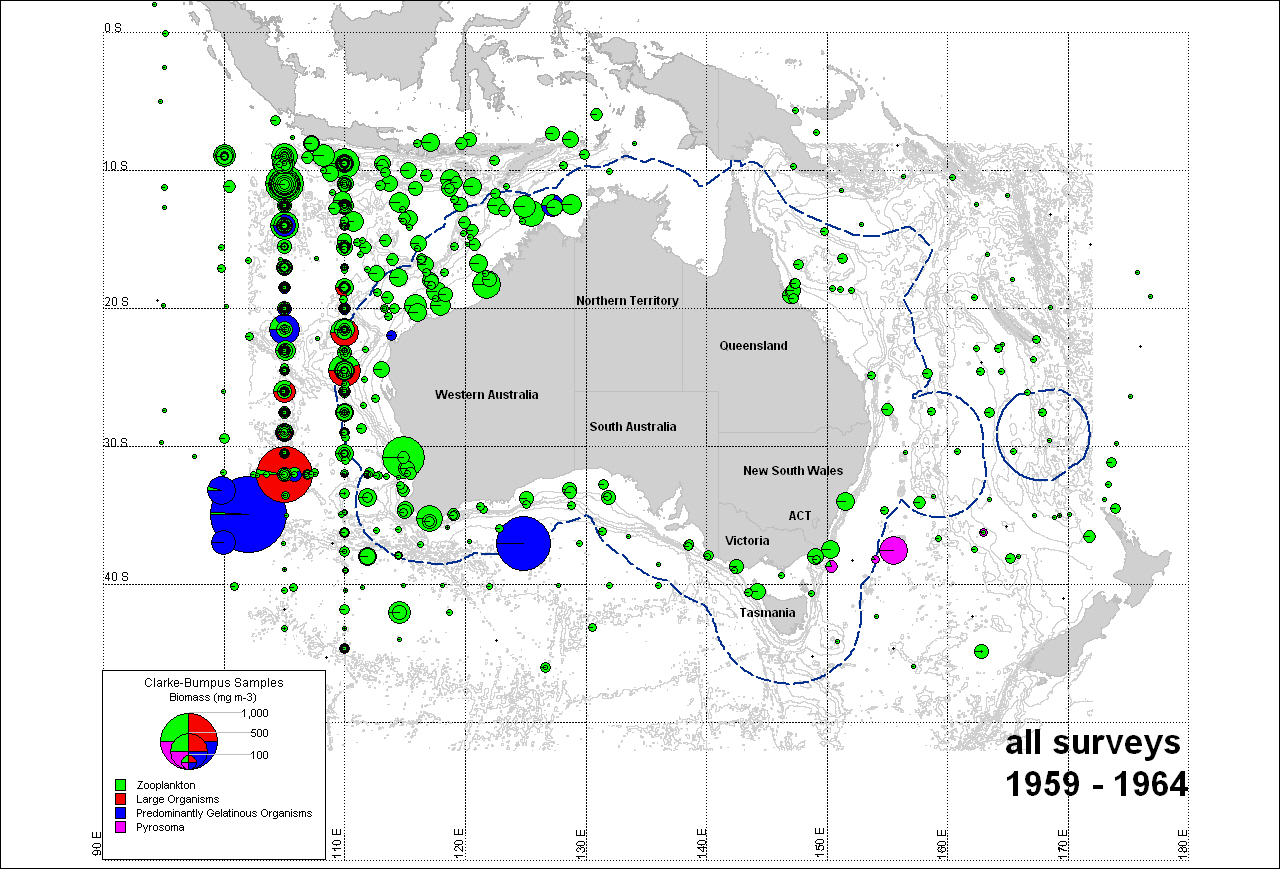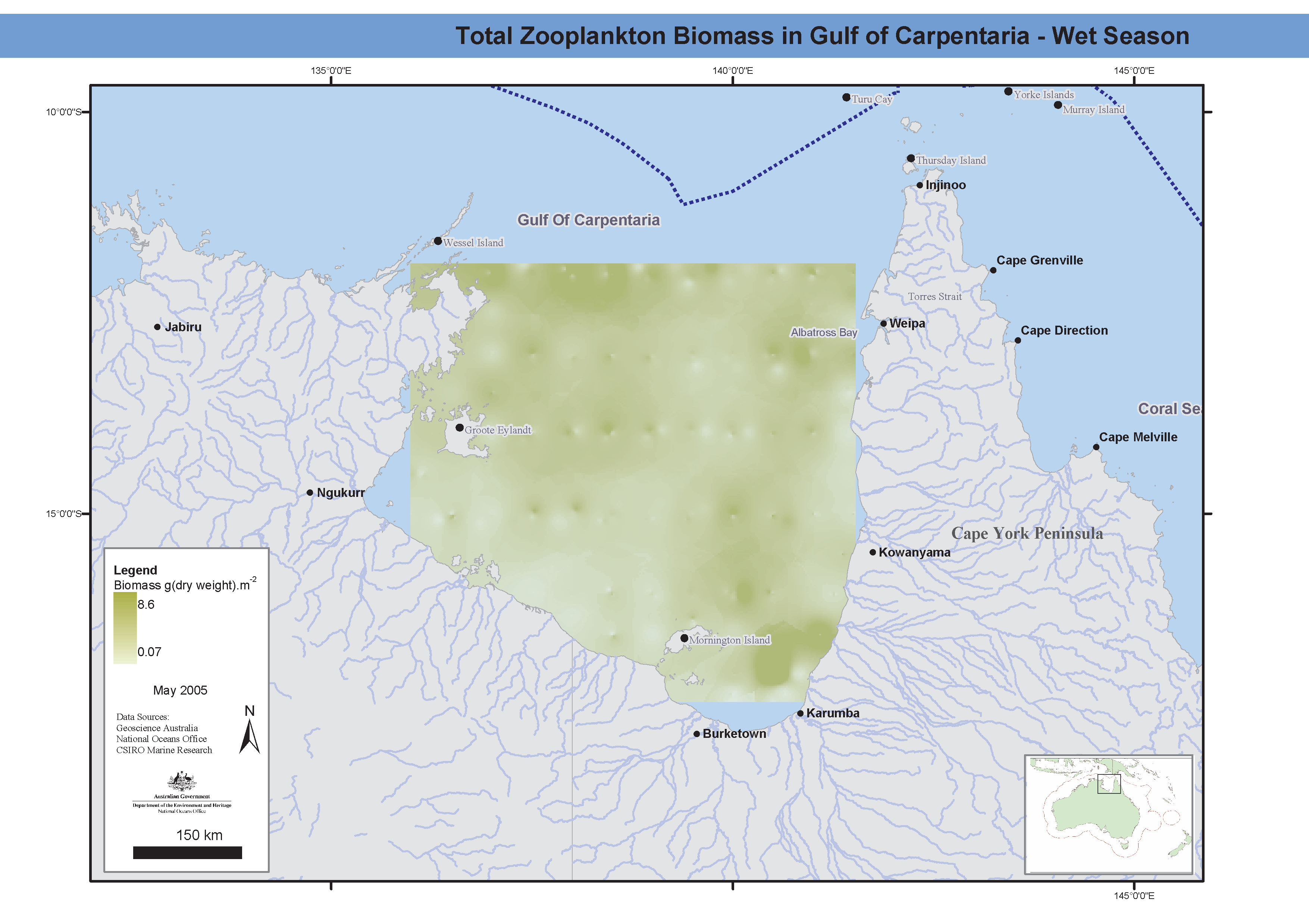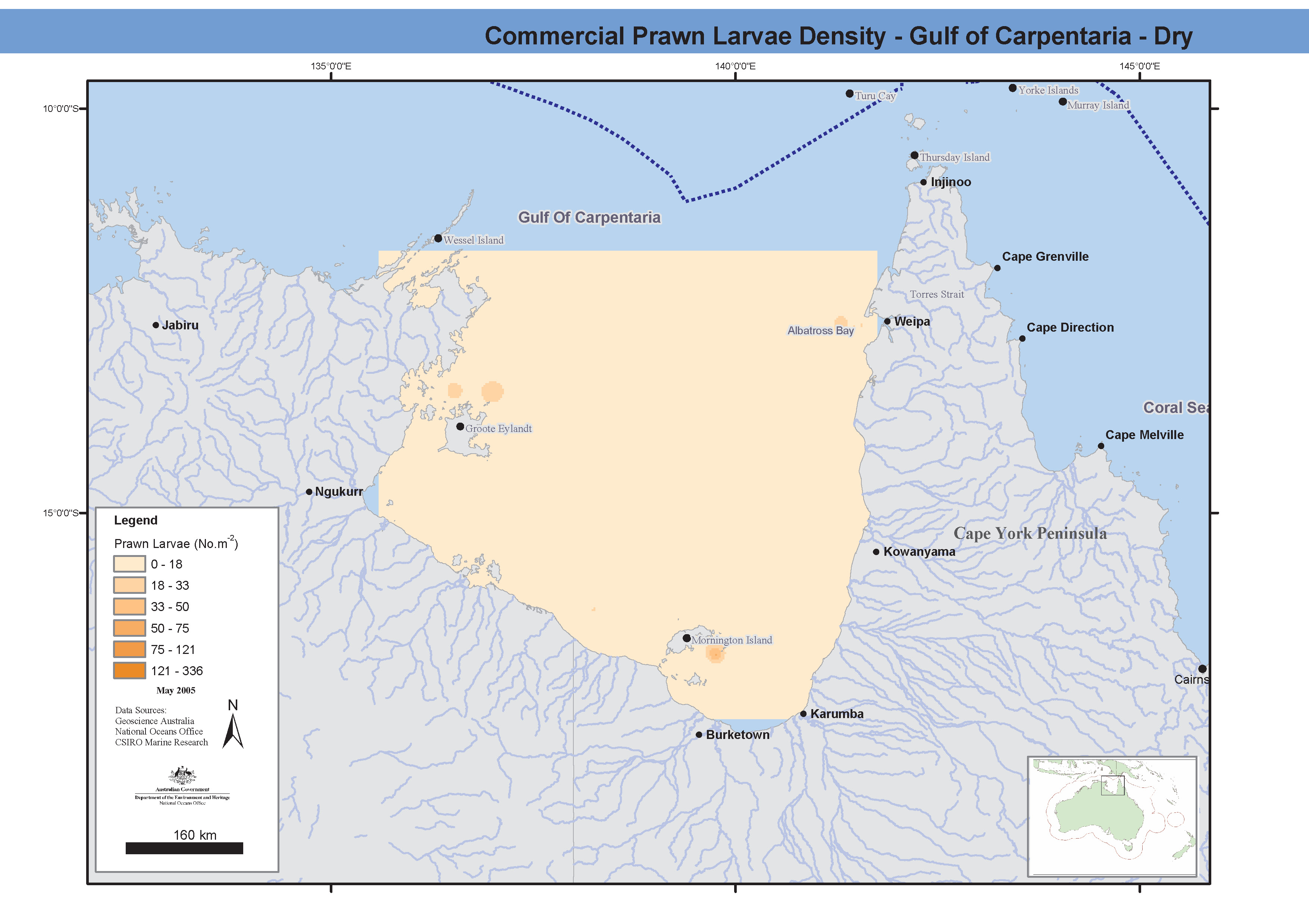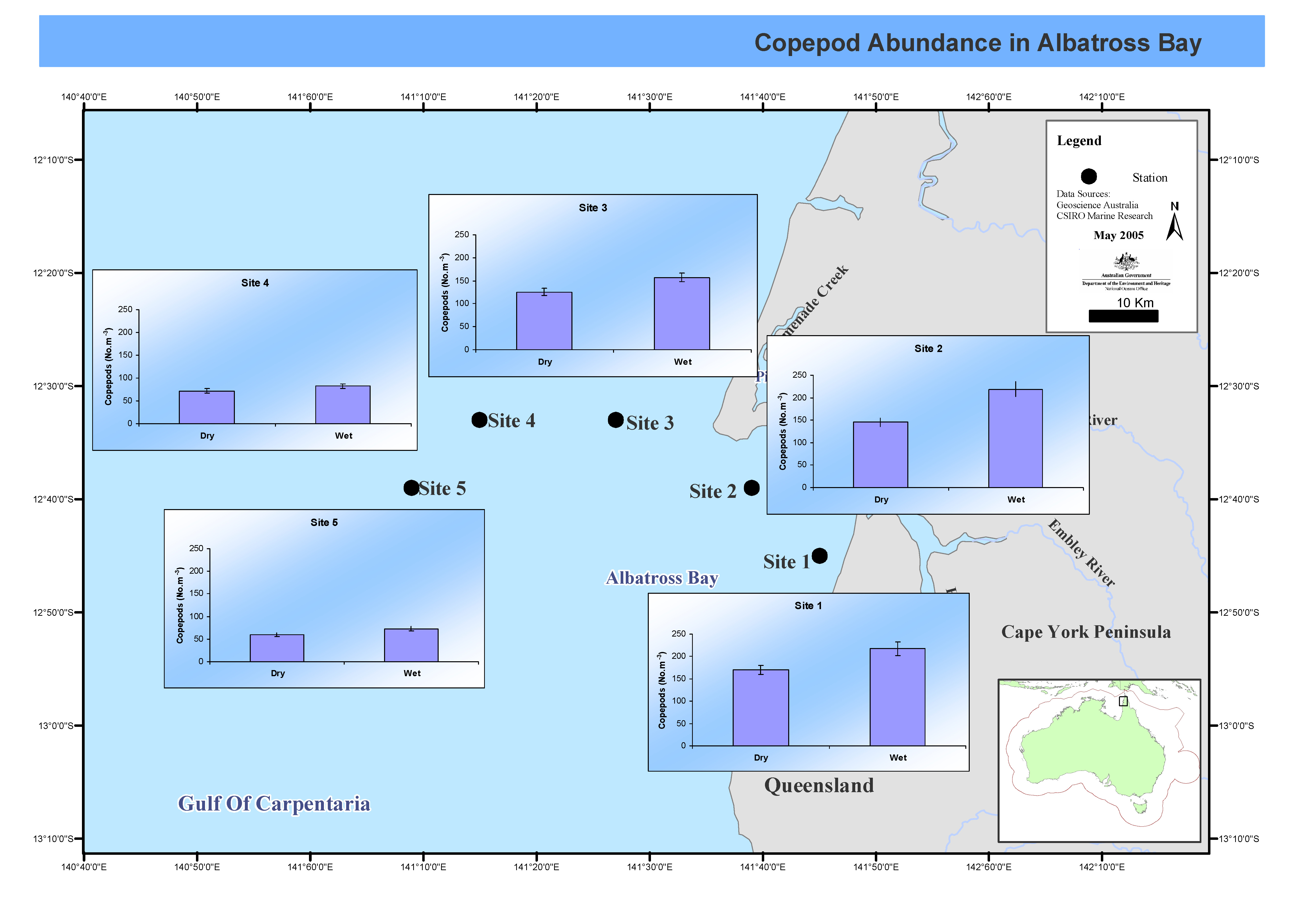Keyword
Earth Science | Biosphere | Aquatic Ecosystems | Plankton | Zooplankton
83 record(s)
Type of resources
Topics
Keywords
Contact for the resource
Provided by
Formats
Update frequencies
Status
draft
-
This dataset contains data collected by the Australian Continuous Plankton Recorder (AusCPR) survey and is funded by IMOS (Ships of Opportunity sub-facility) and CSIRO. The aims of the AusCPR survey are to: * map plankton biodiversity and distribution * develop the first long-term plankton baseline for Australian waters * document plankton changes in response to climate change * provide indices for fisheries management * detect harmful algal blooms * validate satellite remote sensing * initialise and test ecosystem models. The survey conducts repeat tows in the GBR, the East Australian Current and down to the Southern Ocean Time Series Mooring (SOTS). Other routes are conducted on an adhoc nature around Australia. The dataset also contains phytoplankton data from the UTAS / AAD led Southern Ocean CPR (SOCPR) project which is also funded by IMOS. The datasets available in this collection include Phytoplankton Colour Index (an estimate of chlorophyll in the water), phytoplankton abundance, zooplankton abundance and a biomass index from AusCPR and phytoplankton abundance from SOCPR. This data are freely available through the AODN portal: https://portal.aodn.org.au. This data is freely available but please acknowledge all relevant parties, as detailed in acknowledgement section.
-

Map of zooplankton biomass in Australian waters. Data collected from oceanographic surveys conducted between 1959 and 1964 onboard the vessels "Gascoyne" and "Diamantina" using a Clarke-Bumpus Oblique Haul, with zooplankton biomass expressed in milligrams per cubic metre. These maps have been produced by CSIRO for the National Oceans Office, as part of an ongoing commitment to natural resource planning and management through the 'National Marine Bioregionalisation' project.
-
Zooplankton biomass point data that has been mapped using MapInfo along 110ºE, Indian Ocean using a standard net (samples from return-trips along the 110ºE latitude line were shifted to 105ºE). These MapInfo layers have been produced by CSIRO for the National Oceans Office, as part of an ongoing commitment to natural resource planning and management through the 'National Marine Bioregionalisation' project. Variations in onscreen colour representation or printed reproduction may affect perception of the contained data.
-

Maps of total zooplankton biomass (dry weight) from stepped oblique bottom to surface plankton tows from Albatross Bay. Biomass estimates from two mesh sizes. These maps have been produced by CSIRO for the National Oceans Office, as part of an ongoing commitment to natural resource planning and management through the 'National Marine Bioregionalisation' project.
-
Zooplankton biomass point data from southern Australian waters that has been mapped using MapInfo. Data collected from oceanographic surveys conducted between 1959 and 1964 onboard the vessels "Gascoyne" and "Diamantina". These MapInfo layers have been produced by CSIRO for the National Oceans Office, as part of an ongoing commitment to natural resource planning and management through the 'National Marine Bioregionalisation' project. Variations in onscreen colour representation or printed reproduction may affect perception of the contained data.
-
Between March 1986 and April 1992, monthly cruises were carried out at 21 stations in Albatross Bay, Gulf of Carpentaria. Prawn larval densities were measured and salinity-temperature profiles taken. Prawn larval density from stepped oblique bottom to surface plankton tows. Net sizes were 142 or 140 m mesh, 250 micron mesh with a 0.5 x 0.5 metre square frame, stepped-oblique tow. In this dataset Penaid prawn counts were recorded to genus level for all larval stages.
-

Maps showing prawn larval distribution of commercial prawn species during both the wet and dry seasons in Albatross Bay. The data was recorded from stepped oblique bottom to surface plankton tows, 140-142um nets. Nine cruises took place between 1975 and 1977 on chartered boats and the "Kalinda". Prawn larval biomass and densities were measured in several transects across the Gulf of Carpentaria, as well as total plankton biomass. These maps have been produced by CSIRO for the National Oceans Office, as part of an ongoing commitment to natural resource planning and management through the 'National Marine Bioregionalisation' project.
-

This map shows copepod abundance in Albatross Bay, Gulf of Carpentaria. The biomass and species composition of tropical zooplankton in Albatross Bay, Gulf of Carpentaria, northern Australia, were examined monthly for three years between March 1986 and March 1988. Zooplankton taxonomic groups were identified to species level where possible, with a primary focus on copepods. Data is stored as mean number of individuals per site. Sampling occurred across 5 sites (Site 1 = Inshore, Site 5 = Offshore, Sites progressed westward). Temperature and salinity were also recorded for many samples. This map has been produced by CSIRO for the National Oceans Office, as part of an ongoing commitment to natural resource planning and management through the 'National Marine Bioregionalisation' project.
-
Biological and physical data collected from plankton samples collected from Albatross Bay. The samples were worked on as part of preliminary analysis. The analysis occurred 20 November to 15 December 1989. The biomass and species composition of tropical zooplankton in Albatross Bay, Gulf of Carpentaria, northern Australia, were examined monthly for three years between March 1986 and March 1988. Zooplankton taxonomic groups were identified to species level where possible, with a primary focus on copepods. Data is stored as mean number of individuals per site. Sampling occurred across 5 sites (Site 1 = Inshore, Site 5 = Offshore, Sites progressed westward). Temperature and salinity were also recorded for many samples. This data has been produced by CSIRO for the National Oceans Office, as part of an ongoing commitment to natural resource planning and management through the 'National Marine Bioregionalisation' project.
-
26 cruises between 1986 and 1988 recorded the biomass and species composition of tropical zooplankton in Albatross Bay, Gulf of Carpentaria, Northern Australia. The initial data analysis was undertaken by Graham J B Ross between 20 November and 15 December 1999, where a significant number of errors, of various types where discovered and correction made. See attached metadata record REPORT.TXT. Zooplankton taxonomic groups were identified to species level where possible (from m6332.xls), with a primary focus on copepods, to produce the ESRI shape layer and m6332_copepods.xls. Data is stored as mean number of individuals per site. Sampling occurred across 5 sites (Site 1 = Inshore, Site 5 = Offshore, Sites progressed westward). Temperature and salinity were also recorded for many samples.
